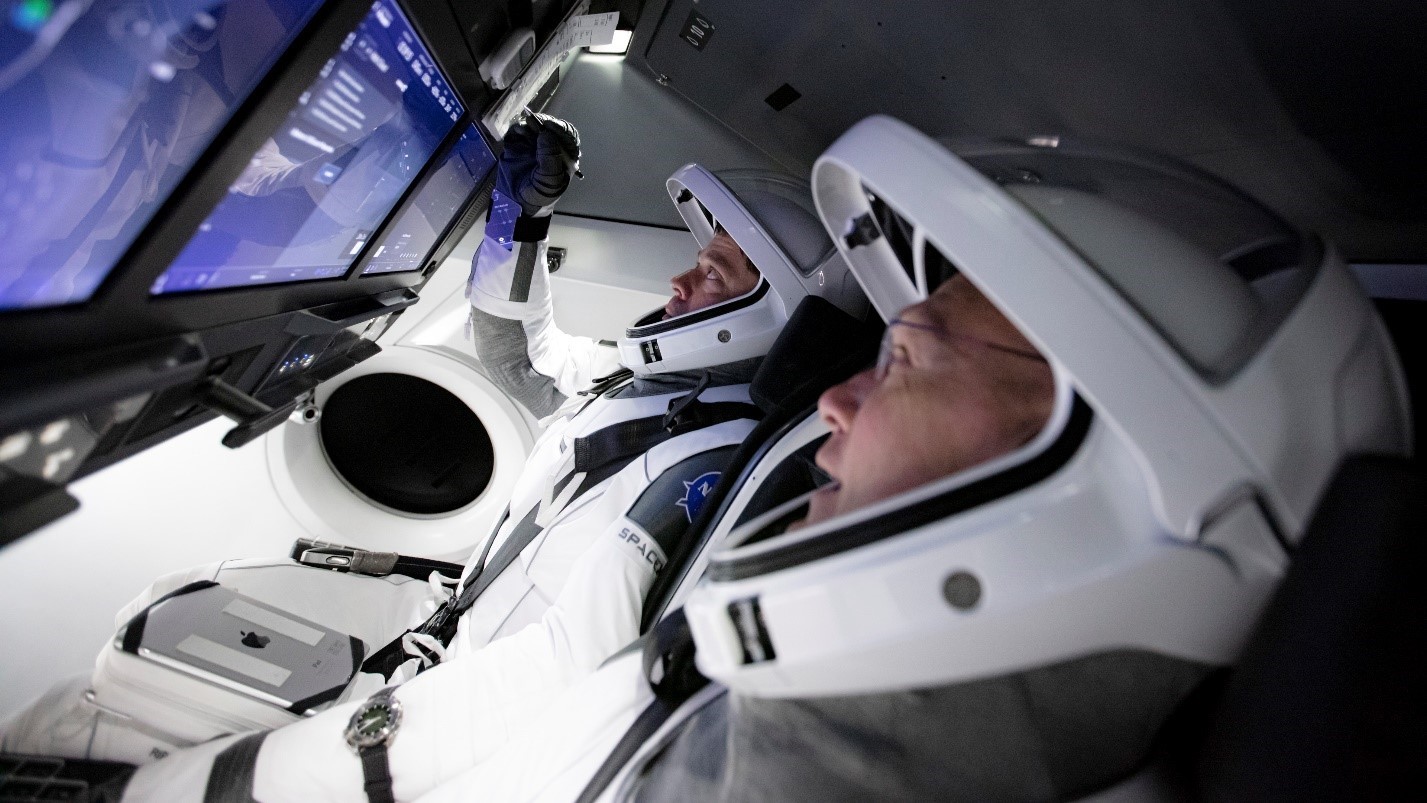The date for SpaceX’s first manned Crew Dragon flight has been set. NASA announced that the Demo-2 mission will lift off atop a Falcon 9 rocket from Launch Complex 39A at the Kennedy Space Center in Florida on May 27, 2020, at 4:32 pm EDT with NASA astronauts Robert Behnken and Douglas Hurley aboard.
The first manned mission to launch from American soil since the retirement of the Space Shuttle in 2011, Demo-2 will be the final test flight by SpaceX before certification for making regular flights to the International Space Station (ISS) to ferry crews back and forth. In addition to the systems of the Crew Dragon being tested in orbit, the launch pad, rocket, spacecraft, and operational capabilities will be put through their paces back on Earth.
After the Crew Dragon reaches orbit, the spacecraft systems, including the environmental control system, displays, control system, and maneuvering thrusters will be given a thorough testing. Around 24 hours after launch, the craft will rendezvous and dock with the ISS. According to NASA, this, as well as the undocking, will be an autonomous operation, though it will be supervised by the crew of the Dragon and the space station.

SpaceX
The joint operations commander of Demo-2 is Robert Behnken with Douglas Hurley as the spacecraft commander. NASA says that both are experienced test pilots and have flown on several Space Shuttle missions. Behnken will be responsible for rendezvous, docking, undocking, and Demo-2 activities at the ISS. Hurley will be responsible for launch, landing, and recovery.
The Demo-2 crew will continue testing of the spacecraft after docking with the ISS along with other research tasks. Though the Crew Dragon can remain in orbit for over 210 days, the duration of the first visit to the ISS has yet to be determined and will depend on the readiness of the next commercial crew launch.
After leaving the station, Demo-2 will return to Earth and splashdown off the coast of Florida, where the capsule and two astronauts will be recovered by SpaceX’s Go Navigator recovery vessel for return to Cape Canaveral.
Source: NASA
Source of Article